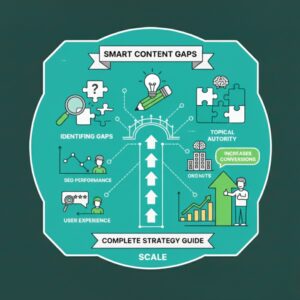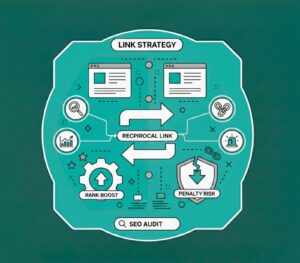Google’s Visual Image Search Upgrade: What Marketers & SEOs Must Know
Blogs | Category
Written By: Lauren Davison
Introduction
Imagine snapping a photo of something you like. It can be a jacket, a plant, or even a chair. Then, ask Google what you want to know about it. Seconds later, you will be able to see similar products, prices, guides, and relevant links. That’s the new world Google has just opened up to its users. They help with their latest Google Visual Image Search Update.
This change brings AI-driven image understanding and natural conversation together. For marketers and SEO professionals, it’s more than an upgrade. It’s a shift in how users discover and interact with brands online. And also, it opened a new path for them to learn.
Table of Contents
What’s New in Google’s Visual Image Search
Google AI Mode visual search transforms how people find information. It blends visual recognition with conversational AI tone. This creates a seamless experience for users between text, image, and context.
From Keywords to Images: How It Works Now
Previously, searches started with words and content about them. Now, they can start with an image to find information more easily. You can upload a photo, take a picture, or even point your camera using Google Lens. Then it starts to describe your search and gives more suggestions.
For example, you might upload a picture of a chair and search, and you get similar chair details. When you say, “Show me this in darker wood”, along with the image. Google then refines results to fit that request. This feature merges the options of image search updates that Google has been testing. And they also help with the broader conversational AI push.
The Technology Behind It
This isn’t just an interface refresh. It’s powered by Google’s multimodal search technology. It combines image analysis, machine learning, and natural language processing.
Google Lens now acts more as the core visual engine. It can identify objects, styles, and textures within images and provide you with better results in search. AI Mode interprets the context behind the user’s query. This creates what Google refers to as “visual search fan-out.”
That means a single photo can now lead to endless possibilities. You can now do everything from identifying an item to recommending similar styles. It also simplifies the trouble of finding places to buy or related topics.
Why This Update Matters for Marketers & SEO
It’s not good to indicate a change; it needs to be addressed as an upgrade to our queries. This upgrade affects how people search, how brands appear, and how content must adapt.
Changing User Behaviour: Visual Comes First
We are now seeing a shift from text-first to image-first behaviour. People often want faster, more intuitive answers. When someone might say, “I saw this dress, show me something similar but shorter.” This is not a traditional keyword to be used on a search engine. It is denoted as conversational image search.
For marketers, this means visuals can now drive intent. The picture itself becomes the query, and your brand’s visibility. It depends on how well your images are understood by Google’s AI.
New Opportunities for Product Discovery and Shopping
The Google Lens update 2025 puts product discovery at the centre. It allows users to shop through visuals, even if they don’t know what to type.
With this upgrade, E-commerce brands now have a powerful chance to reach users at the “I want this” moment. But only if images are optimised to have better results. Filenames, alt text, schema markup, and descriptive captions matter more than ever.
You have to make a well-optimised product image. This helps your product to appear in visual search, conversational queries, and shoppable results. That’s three entry points from a single asset.
Impact on SEO & Visual Content Strategy
SEO is no longer just about words. It’s more about how your visuals communicate meaning. Google’s documentation has already pointed toward “visual element optimisation”. They need meaning in every image to carry context.
Alt text, captions, structured data, and visual consistency all feed into this. The goal isn’t to trick the algorithm. It’s to help it understand your content better.
Marketers who align visual and textual SEO will dominate discovery results. Those who don’t will fade behind better-optimised competitors.
How to Prepare Your Site for Google Visual Image Search Update
It’s not tough to move along with technological advancement. You can adapt right now. Here’s how to make your imagery work in the new visual-first world.
Optimise Your Image Assets
Use clear, high-resolution images that load fast. Each image should have a descriptive filename rather than just some code. For example, name the image of a leather handbag like black-leather-handbag.jpg instead of IMG1234.jpg.
And, add rich alt text that explains what’s in the image. This includes product schema where relevant. Also, note to avoid filters or edits that distort the product’s real look.
Use Conversational and Visual Metadata
In this era, Google’s new AI Mode recognises natural descriptions easily. So, use captions, tags, and metadata that reflect how people speak. For example, instead of “blue jeans,” you could write “dark-wash barrel jeans with cropped hem.” These descriptive methods help your product be found in search.
This reliable approach helps your visuals to match conversational image search queries. And also, they can mirror how people describe what they see.
Leverage Mixed Media & Visual Storytelling
Google multimodal search thrives on blended media. It combines visuals, text, and context wherever possible.
Add image galleries, carousel-style product comparisons, or short clips showing usage. This kind of visual storytelling keeps users engaged. And also, it helps to align with how AI Mode interprets layered input.
Monitor Metrics and Visual Engagement
Track how your images perform occasionally. Use Search Console’s image impressions data and compare click-through rates from image results. And make the best changes to improve your search rankings.
Also, note image-driven conversions, where a user’s first touchpoint was a visual. This helps you understand what kind of imagery attracts and converts within the new search model.
Common Mistakes to Avoid
Even minor missteps can limit visibility in Google’s new system.
Treating Images as an Afterthought
Stock photos or unlabelled visuals won’t cut it anymore. Every image needs to have a clear intent. Make sure each one of your brand’s photographs serves a purpose and connects to your story.
Overloading with Keywords in Alt Text
Keyword stuffing doesn’t help. In fact, it can confuse both users and algorithms. Write alt text naturally. Explain what’s shown, not what you want to rank for.
Ignoring Mobile & Visual-First Formats
Most visual searches happen on mobile devices. If your site’s images aren’t responsive, compressed, and properly formatted, they’ll load slowly. Also, it leads your image to be displayed poorly.
Prioritise mobile layouts that highlight visuals first, not as decorative extras.
Conclusion
The Google Visual Image Search Update signals a major evolution in how people connect with content. It’s not just about seeing and searching. It’s about understanding through images.
Marketers who embrace this shift will gain new ways to reach customers. They can reach it through visuals, conversations, or smart data. Optimise your imagery and focus on context. Then you will be ready for what’s next in the world of visual search marketing strategy.
Frequently Asked Questions
- What is Google Visual Image Search Update?
It’s Google’s new AI-powered search mode that lets users upload or capture images. Then it refines results using natural language prompts.
- How does this update affect SEO?
It makes image optimisation more vital. You can now treat visuals like key search assets, with detailed filenames, alt text, and structured data.
- What is multimodal search in Google?
Multimodal search means Google can process both images and text together. So, a user might show a picture and ask a question about it in the same query. It gives more reliable results to their search.
- How can brands prepare for Google’s AI Mode visual search?
Focus on improving image quality and writing natural-sounding alt text. Use a relevant schema, and monitor image-based traffic in analytics.
- Is Google Lens part of this update?
Yes. The Google Lens update 2025 forms the foundation of this system. It combines image recognition with conversational AI to enhance user search experiences.

Written by - Lauren Davison
Introducing Lauren – one of our content writers who has a flair for SEO and creative strategy!
With a Master’s Degree in Creative Writing, Lauren has niched down into SEO and content writing.
Outside of work, she loves watching the darts, reading and the pub on the weekend.
Want some more?
Latest Insights & News

Revolutionising Marketing: The Rise of Situational Content Strategies
Situational content strategies involve tailoring content to specific moments, contexts, or audience behaviours. By aligning content with real-time trends, seasonal needs, and user intent, brands can increase relevance, improve engagement, and strengthen SEO performance.

Smart Ways to Identify and Fill Content Gaps Fast: A Complete Strategy Guide
Content gaps refer to missing information, unanswered questions, or underserved topics in your existing content. Identifying these gaps helps you create targeted, high-value pages that improve search visibility, satisfy user intent, and outperform competitors.

Reciprocal Links in SEO: Do They Still Boost Rankings or Risk Penalties?
For the keyword “reciprocal links SEO,” focus on explaining how reciprocal linking works today. Reciprocal links are not harmful by default, but Google can flag excessive or manipulative link exchanges. To stay safe, only exchange links when they are contextually relevant, natural, and valuable to users.




